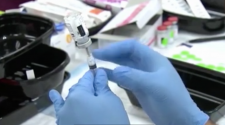internet security and data protection concept, cybersecurity
getty
Now a trillion-dollar asset, bitcoin is paramount to cryptocurrency culture after its 60% hike this month, surpassing any traditional asset in this record-breaking milestone.
Since its introduction to the financial market in 2009, this first-of-its-kind cryptocurrency has been marked by high volatility and price fluctuations. Being a “highly speculative asset”, U.S. Treasury Secretary Janet Yellen has stressed the need for regulating any institution that handles bitcoins and investor protection in a recent CNBC interview. Despite the lack of regulation and vulnerability to scams and illicit transactions, a mixture of social proofing and celebrity endorsements has catapulted its popularity among investors and the masses.
But behind bitcoin is the ingenious blockchain technology that enables this unprecedented digital asset. The symbiotic relationship between bitcoin and blockchain is so apparent that people often confuse the two. Simply put, without blockchain, bitcoin is useless. With each bitcoin transaction, a digital trail is created on a shared ledger. Though the transaction itself is open and public, the person’s identity behind the bitcoin transaction is encrypted and remains private. As transactions are posted on this digital ledger, a perpetual “chain” of anonymous and real-time transactions is created.
Though blockchain technology is most prominently recognized with its application to bitcoin and other cryptocurrencies, other use cases are taking precedence, particularly within supply chain management.
As seen with COVID-19, supply chain disruption is a critical risk that has an enormous impact on a company’s operations and bottom line, especially for those that operate very complex and global supply chains with multiple intermediaries. The slightest hiccup in production can disrupt supply chain operations in mass proportion, creating fluctuations in lead times that can either cause supply shortages or tie up money in excess inventory.
Even with the most sophisticated ERP software, there is still a potential for information to be locked in silos, disparate processes, unnecessary paper trails, miscommunication between partners, and untraceable documents and activities. Streamlining the entire supply chain network would require integrating all software and systems across various suppliers, retailers, manufacturers, financial institutions, logistic providers, and regions to speak the same language. Essentially, all parties would be required to integrate the same system of record for every step of the supply chain process, which is highly impractical.
Blockchain solves this problem by greatly enhancing supply chain visibility and traceability within a complex supply chain network. All parties would have access to the blockchain with secure and synchronized data, including full transparency of every action being performed in real-time during end-to-end supply chain activity. As a result, leaders can quickly trace every single component of production and financial transactions, identify any existing bottlenecks, and quickly pivot to avoid certain risks that could cause disruption.
Blockchain is currently being used across various industries to transform supply chains ranging from food and agriculture, retail, aerospace, and even COVID-19 vaccinations!
Since the FDA authorized the first emergency use of the Pfizer-BioNTech COVID-19 Vaccine to be administered in the U.S. in December 2020, the rollout of COVID-19 vaccines has been underway. Subsequently, decision-makers have been rallying to make the vaccination available to every adult in the U.S. by the end of summer 2021. The World Health Organization also announced its global effort to provide rapid and equitable access to 2 billion COVID-19 vaccination doses for all countries by the end of 2021.
With this enormous feat, the deployment of advanced technology to enable vaccination logistics is essential. The vaccination supply chain has barriers that include a lack of transparency, traceability, and real-time information coordination. According to CDC Director Rochelle Walensky, “one of the biggest problems right now is I can’t tell you how much vaccine we have, and if I can’t tell it to you then I can’t tell it to the governors and I can’t tell it to the state health officials.”
Leveraging blockchain is a solution to this problem. In fact, two hospitals in the U.K. have already been reported using blockchain to increase visibility into the supply chain logistics of vaccines by tracing temperature-controlled COVID-19 vaccinations and synchronizing data for real-time status updates on shipments for distribution and administration.
In the food industry, blockchain is being used to enhance traceability and transparency to reduce inventory loss by tracking the source of contaminated food, from farm and manufacturing to retail. Since 2019, Walmart and Sam’s Club made it a business requirement for suppliers to use IBM Blockchain as apart of their supplier agreements to allow transparent information among diverse suppliers in the supply chain network. Other names in the food industry who are using IBM Blockchain include Nestlé and Tyson Foods.
The retail and consumer goods industry also uses blockchain to reduce losses due to counterfeit goods and allow supply chain partners to trace products in different locations. And in the aerospace sector, leaders leverage blockchain to streamline material traceability for parts acceptance from FAA and non-FAA certified sources and trace aircraft material requirements.
Though Bitcoin is the earliest application of blockchain technology, its implementation beyond cryptocurrencies positions it as one of the future’s leading technologies that will transform the way businesses operate in years to come.
















